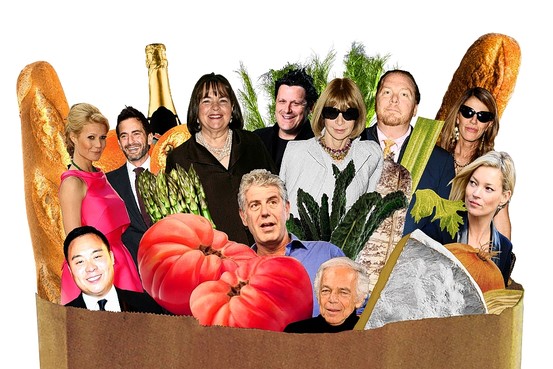
“The difference between style and fashion is quality.”
— Giorgio Armani (born 1934)
.
Every night you would hear Sergio Cammariere on the Bellavitae soundtrack. A native of Calabria, Sergio has a unique compositional style — one that blended very well with the ambiance of our restaurant.
After a career as a niche musician, distinguished by his collaboration with poet and singer/songwriter Roberto Kunstler, he appeared at the Sanremo Festival in 2003 performing the song Tutto quello che un uomo. He placed third and won the Critics’ Choice award.
My favorite album, Sul Sentiero, was released a year later, in November 2004. It features rich string arrangements, fiery jazz influence, and syncopative point – counterpoint. Two years later, Cammariere released his first self-produced record, Il Pane, Il Vino e la Visione, collaborating with several well-known jazz artists, including Gilberto Gil, Ivan Lins and Bebo Ferra.
Many of his songs are not available in the United States via MP3 releases, but you can click below to sample / purchase some of his music:
<
.
Album releases:
.
My favorite, “Libero Nell’Aria”:
.
Sergio Cammariere – Libero Nell’ Aria
Uploaded by EMI_Music. – See the latest featured music videos.
Further reading:
.

From Katherine Wheelock in The Wall Street Journal:
At that point, it was fair to argue that certain corners of the fashion world were infatuated with food culture. Then, this fall — wham! David Chang, the chef behind Momofuku, appeared in the September issue of Vogue for a feature on Fashion’s Night Out, sandwiched between Naomi Watts and Finnish model Kirsi Pyrhonen; Barneys New York announced that its holiday windows would star Anthony Bourdain and Paula Deen; and word came over the U.K. wires that Kate Moss was mothering pots of simmering fruit for her own homemade jam. It was time to admit that a proper love affair was underway between fashion and food — and maybe not the kind that ends in December.
.
— Paolo Giordano (born 1982) in The Solitude of Prime Numbers
.
From the Los Angeles Times:
LOS ANGELES — Dino De Laurentiis, the flamboyant Italian movie producer who helped resurrect his nation’s film industry after World War II and for more than six decades produced films as diverse as the Federico Fellini classic “La Strada” and the 1976 remake of “King Kong,” has died. He was 91.
Mr. De Laurentiis, who moved to the United States in the 1970s and continued to produce films until 2007, died Wednesday night at his Beverly Hills home, his daughter Raffaella De Laurentiis said Thursday. The cause was not given.
Mr. De Laurentiis began his career as a producer in Italy in the 1940s and in the next decade produced two Oscar-winning best foreign films: Fellini’s “La Strada” (with then-partner Carlo Ponti) and Fellini’s “Nights of Cabiria.”
During the De Laurentiis-Ponti partnership in the ’50s, they launched into foreign-film production in Italy, producing director Mario Camerini’s “Ulysses,” and King Vidor’s “War and Peace.”
As producers in Italy after World War II, “De Laurentiis and Ponti in particular took the function of producer, which had never been highly regarded in European cinema before this and raised it to a higher level,” said University of Southern California film professor Rick Jewell.
In 1962, the producer began building a sprawling studio complex on the outskirts of Rome that he called Dinocitta: Dino City.
During the 1960s he produced films such as “Barabbas,” “The Bible” and “Barbarella.” Mr. De Laurentiis is credited with pioneering the now-common practice of financing films by preselling the distribution rights in foreign countries.
After selling his studio and moving to the United States in the 1970s, De Laurentiis produced films such as “Serpico,” “Death Wish,” “Three Days of the Condor,” “The Serpent’s Egg,” “Ragtime” and “Conan the Barbarian.”
.
Further reading:
.

.
From Wine Spectator’s Matt Kramer:
Authenticity is the transformative force right now. The best wines made today — the most persuasive wines — come from the regions, the zones and, above all, the producers and consumers where the demand for authenticity is strongest.
Conversely, many of today’s shallowest, most facile wines are created by winegrowers — and sometimes celebrated by wine critics — who dismiss, disregard or are even contemptuous of authenticity.
Those who refuse to acknowledge authenticity — either as producers, critics or consumers — are certainly numerous. But look around: Are they convincing anyone? Growers who use reverse osmosis and spinning cones to deconstruct and reconstruct their wines are furtive, not evangelical, while those who pursue authenticity are winning the proverbial hearts and minds and, not least, palates.
Today’s transformation of fine wine is rooted in authenticity. Because without a belief in, and an adherence to, authenticity, why bother?
.
Theme: Food Express WordPress Food Theme is developed by Template Express.
Proudly powered by WordPress